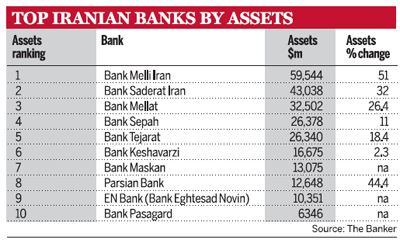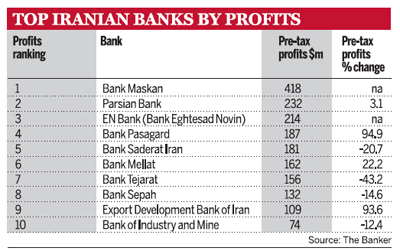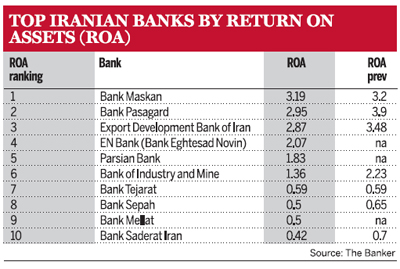Islamic banking keeps Iran recession-proof
Iran's banks were somewhat insulated from the global financial turmoil affecting the developed world. Although profits across the sector remained relatively static in The Banker's Top 1000 listings this year, a boom in Islamic financing has added much-needed ballast to banks' bottom lines. Iranian banks now hold $235bn of sharia-compliant assets, which makes up 37.5% of total sharia-compliant assets worldwide.
In fact, The Banker's Top 500 Islamic Institutions ranking, published last October, shows Iran has more Islamic assets than all other countries and its banks account for six of the top 10 Islamic institutions worldwide. Bank Melli Iran has the most sharia-compliant assets in the world at $48bn. The others in the top 10 are Bank Saderat Iran, Bank Mellat, Bank Tejarat, Bank Sepah and Bank Keshavarzi.
The assets of Iran's biggest banks grew considerably in 2009's rankings. Particularly impressive was Bank Saderat Iran, which increased its assets by 32% from $32.6bn in last year's Top 1000 rankings to $43bn. The return on those assets, however, fell from 0.7% to 0.42%. In fact, despite the strong growth in assets across the Iranian bank sector, the return on assets among most of Iran's biggest banks fell in this year's Top 1000, compared with last year's rankings. Bank Saderat's pre-tax profits were also down in this year's rankings. Pre-tax profit fell nearly 21% from $228m for the financial year to March 2007, to $181m for the financial year to March 2008.
Profit-wise, Bank Maskan was the most profitable in absolute terms with $418m of pre-tax profits, while Bank Pasagard had the most significant growth, increasing 94.9% to $187m.
Five of Iran's banks entered the highest movers category in this year's Top 1000, with the Export Development Bank of Iran topping the list. The bank leapt 579 places from 867 last year to 288 this year. Its Tier 1 capital increased from $327m in calendar year 2007 to $2.1bn in calendar year 2008. Bank Saderat Iran, Bank of Industry and Mine, Bank Pasagard and Bank Melli Iran also made the list of highest movers in this year's Top 1000.
Looking ahead, Iran's banks face a series of challenges if they are to sustain their current strength. The recent mass protests and violent state response over the disputed re-election of President Mahmoud Ahmadinejad do not bode well for the economic future of the country. Weaker oil prices will also damage Iran's macro-economic outlook. However, the steady growth of Islamic finance gives the Iranian banking sector good cause for optimism.





